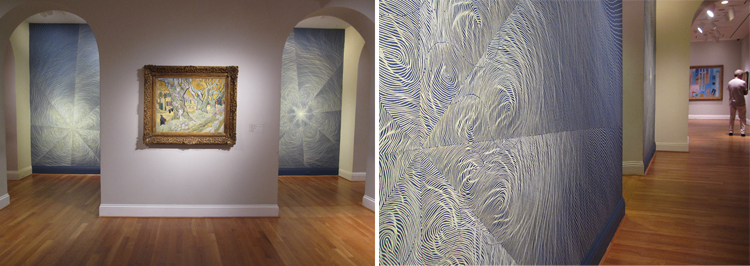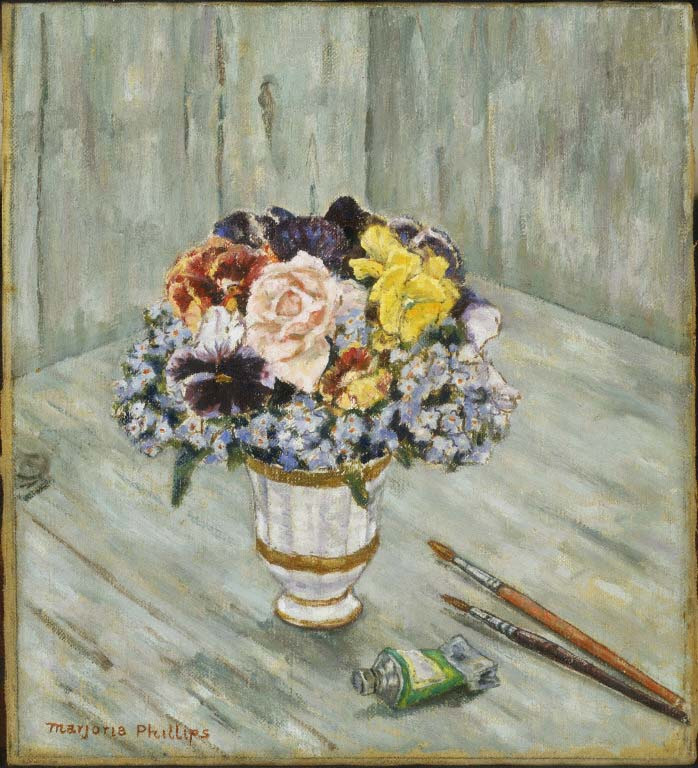In honor of Women’s History Month and The National Museum of Women in the Arts #5WomenArtists challenge, we’re highlighting some of the spectacular women on our staff and the female artists who inspire them.
Liza Strelka, Manager of Exhibitions
Do you have a favorite woman artist from The Phillips Collection, or a favorite female artist whose work has been on display at the museum?
LS: I have to list two: Alma Thomas and Linn Meyers.

Linn Meyers’s 2010 Intersections installation at the Phillips, “at the time being.” Photos: Sarah Osborne Bender
Who is your all-time favorite female artist? Do you remember the first time you saw her work? How does she inspire you?
LS: It’s impossible for me to name just one favorite, but I adore the wooden assemblage sculptures of Louise Nevelson. I was introduced to her work in college, and I’ve visited the Smithsonian American Art Museum’s sculpture by her countless times since. I could stare at her wood assemblages for hours. The interplay of darkness and light, movement and stillness, and chaos and order in her work speaks to her tremendous talent. Every time you look at a work by Nevelson, something new reveals itself to you.
Name five women artists:
Francesca Woodman
Nancy Spero
Faith Ringgold
Ana Mendieta
Jennifer Bartlett



